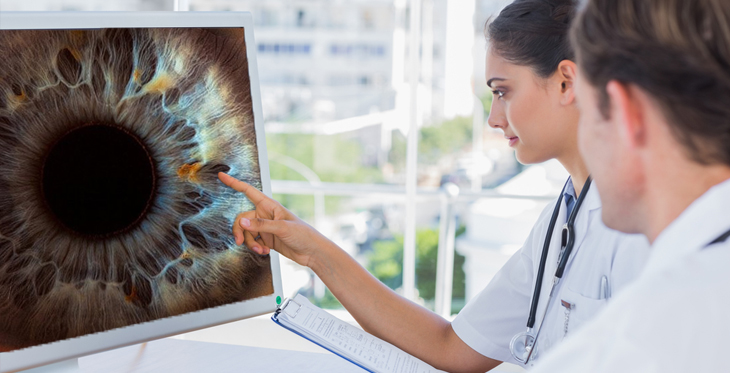We know that diabetes is the leading cause of new blindness in working age adults.
We know that it’s more common among Native Americans than any other ethnic group.
We also know that only half of Native Americans get an annual eye exam, which is key to effective treatment of diabetic retinopathy, a disease that can eventually lead to blindness.
It’s a public health crisis – and one that telemedicine has made great progress toward resolving.
“Telemedicine is pivotal for diabetic retinopathy,” says Mark B. Horton, OD, MD, director of the U.S. Indian Health Service’s multi-state teleophthalmology program, a collaboration with the Joslin Diabetes Center in Boston.
Research has shown that 95 percent of the cases of blindness caused by diabetic retinopathy are preventable, if the disease is detected and treated promptly, Horton says.
Connecting the Doctor to the Clinic
Since 2000, teleophthalmology has made it possible for Horton to examine the eyes of more than 80,000 Native Americans with diabetes. He started with 183 cases in 2000, and expected to handle up to 15,000 cases in 2013.
The teleophthalmology network connects Horton’s Phoenix office to 86 Indian Health Service clinics in Arizona and 23 other states.
For Native Americans and others who live in rural communities some distance from Tucson and Phoenix, getting to an eye doctor is a logistical challenge, Horton says. In addition, “An eye exam is not at the top of their list of priorities, particularly since they are usually asymptomatic until the disease grows to advanced and less treatable stages.”
“Now we can take the eye exam to patients wherever they may be,” Horton says. He serves patients who live in Supai, at the bottom of the Grand Canyon, where exam equipment is delivered by helicopter, then flown back out again, and in the Eastern Aleutian Islands off the coast of Alaska.
Saving Millions in Health Care Costs
According to the Indian Health Service Division of Diabetes Treatment and Prevention, teleophthalmology saves hundreds of millions of dollars a year in medical care and support services that would be required for people who go blind. For that reason, the IHS has made teleophthalmology mandatory at all its hospitals and larger health care facilities.
“It’s far cheaper to prevent and treat this disease than it is to treat the fallout of untreated disease,” Horton explains. “When a patient gets diagnosed with diabetic retinopathy, they tend to have other complications from diabetes as well.
“Teleophthalmology has the potential to have a profound effect on improving the quality of public health, and decreasing health care costs.”
Not all health plans pay for teleophthalmology, Horton says, but the Arizona Health Care Cost Containment System (AHCCCS), Arizona’s Medicaid program for low-income individuals and families, was one of the first to get on board.
“AHCCCS recognized the value of this almost immediately,” Horton says.
“But health care providers, and payers, tend to be very skeptical, and that’s very frustrating for folks like me. But when you get right down to it, no human likes change. The only thing that likes changing is a wet baby.”

